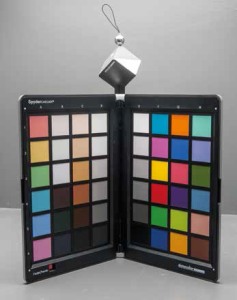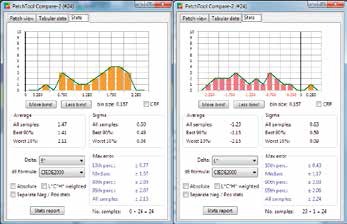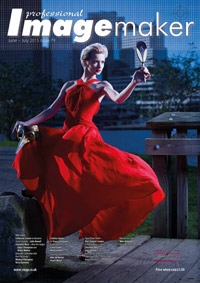articles/Colour Management/datacolor-cal-aids-page1
Datacolor Calibration Aids - part 1 of 1 2 3 4 5 6
by Mike McNamee Published 01/06/2015

It is axiomatic to any system calibration, inside or outside of photography, that an output* is tested against a known standard. *Output being print, monitor screen, projector image, camera image, scanner image a proof print or any combinations of these things that require one to be compared with another.
The most common standard targets for professional imaging are the Macbeth Color Checkers (in various forms: CC, CC Classic, CC Mini, SG and Passport), the IT8 series of targets (for cameras, scanners and printer output), and smaller patch bars such as the Fogra Ugra V2 and V3 used in pre-press.
All of these targets may be used to check the colour values of an output against reference standards, which are published and widely available. It is vital that the standard target is made to a higher level of accuracy than the aim specification otherwise the error of the target completely pollutes the answers. In engineering dimensional metrology, the standards are 'traceable' right back to the high level hosted by the National Physical Laboratory. This used to be a 1-metre piece of Invar metal but now that is not good enough and the invariable wavelength of particular light is used to specify the standard metre. It is typical in engineering to expect an order of magnitude increase in accuracy as you progress up the standards scale (which might typically be Shop floor >Tool Room > Metrology Department > Company QA Compliance Department... > National Physical Laboratory.

*C.S. McCamy, H. Marcus, J.G. Davidson, "A Color-Rendition Chart," J. Appl. Phot. Eng., Vol. 2, No. 3, Summer 1976, pp. 95-99, Society of Photographic Scientists and Engineers
Things are a lot slacker in the graphics industry but whereas calibration used only to be conducted by men in white coats, a high percentage of photographer's desks will have a calibrator on them. Sadly the rigorous traceability standards are not implemented on these systems and even modest cross checking is often absent - thus you can calibrate your screen but have no clue whatever just how well the calibration has been carried out, if at all!
This is the background with which we commenced our testing of a number of Datacolor calibration products.
The Spydercheckr
This is a basic GretagMacbeth Color Checker, as originally defined by Marcus, McCamy and Davidson* and is the one we all know and love. Originally devised for TV work it has been adopted and indeed proliferated under digital, still imaging. For reasons that are unclear the Spydercheckr contains a re-arranged patch order which will not affect the user of just this product, but certainly tested our ability to rearrange patches/data in Photoshop, Excel and Babelcolor - but more of that later.
You are currently on page 1
- Datacolor Calibration Aids page 1
- Datacolor Calibration Aids page 2
- Datacolor Calibration Aids page 3
- Datacolor Calibration Aids page 4
- Datacolor Calibration Aids page 5
- Datacolor Calibration Aids page 6
1st Published 01/06/2015
last update 09/12/2022 14:53:04
More Colour Management Articles
There are 28 days to get ready for The Society of Photographers Convention and Trade Show at The Novotel London West, Hammersmith ...
which starts on Wednesday 14th January 2026





